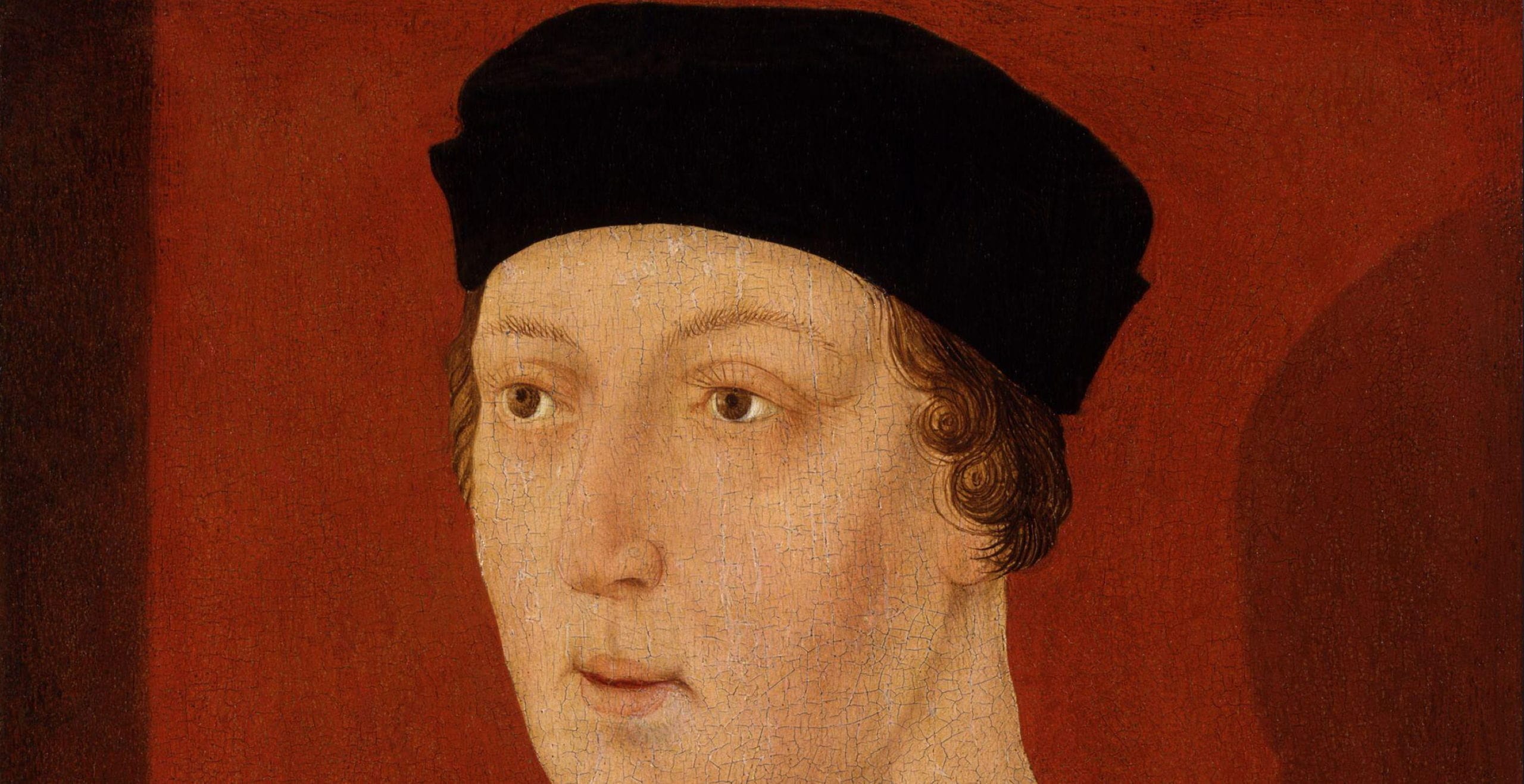The Plantaganet King Henry VI was a weak king, married to an ambitious French princess, Margaret of Anjou. At this time, there was a complex series of rivalries and jealousies at court between powerful noble families. The Queen and her circle of nobles were known as Lancastrians after Henry’s surname of Lancaster. The party of nobles who opposed the Queen and the Lancastrians was led by Richard, Duke of York, Henry’s cousin, who was also descended from King Edward III and therefore also had a claim to the throne of England. They were known as Yorkists.
Henry VI suffered from periods of insanity. During one of these periods in 1454, Richard of York was appointed ‘Protector of the Realm’. His first act was to dismiss some of the Queen’s Lancastrian advisors which caused great bad feeling. The King recovered some months later and York was summarily dismissed.
 The weak, sick king was unable to control his ambitious queen on one side, and the Yorkist Earl of Warwick, the ‘kingmaker’, on the other side.
The weak, sick king was unable to control his ambitious queen on one side, and the Yorkist Earl of Warwick, the ‘kingmaker’, on the other side.
Both sides started to recruit soldiers and prepare for war. Many soldiers had just returned from the Hundred Years War in France, so recruiting trained men to fight was easy. Each side chose a badge: the Red Rose for Lancaster and the White Rose for York.
In 1455, just two years after the end of the Hundred Years War, this dynastic civil war broke out. There was tremendous bloodshed as defeated forces on both sides were brutally murdered by the victors.
A Chronology of the Wars of the Roses
22 May 1455: First Battle of St Albans. A Yorkist victory during which the Duke of Somerset (one of the Lancastrian leaders) was killed. The Duke of York was re-appointed Protector, then dismissed again in 1456. Queen Margaret fuelled anti-Yorkist sentiment at court. Richard, Duke of York’s influence was undermined and he was excluded from the royal council.
23 September 1459: Battle of Blore Heath. A Yorkist victory.
12 October 1459: Battle of Ludford Bridge. This time, a Lancastrian victory. The Queen declared Yorkist property and lives forfeit. Richard of York fled to Ireland.
10 July 1460: Battle of Northampton. A Yorkist victory; King Henry VI captured. Massacre of prisoners ordered by the Earl of Warwick. The Queen fled to Wales.
10 October 1460. The return of Richard of York who was declared heir to the throne. In response, the Queen raised a new army.
30 December 1460. Battle of Wakefield. The Yorkists were defeated and Richard, Duke of York, was killed. He was succeeded by his son Edward.
2 February 1461: Battle of Mortimer Cross. Richard of York’s son Edward, Earl of March was victorious.
17 February 1461: Second Battle of St Albans. A victory for the House of Lancaster. Henry VI rescued.




from left to right:
Henry VI, Edward IV, Edward V, Richard III
4 March 1461. Edward of York, Edward IV, proclaimed king in London.
9 March 1461. Battle of Towton. Another Yorkist victory for The Earl of Warwick. Flight of King Henry, Queen Margaret and the Prince of Wales to Scotland.
24 June 1465: Henry VI captured and imprisoned in the Tower of London.
1 May 1470. After quarrelling with Edward IV, Warwick the Kingmaker fled to France There he joined forces with Queen Margaret before returning to England and restoring the Lancastrian Henry VI to the throne on 13th October.
14 March 1471. The Yorkist King Edward fled to France, returning with a small army.
14 April 1471. Battle of Barnet. A victory for Edward’s Yorkist army. Warwick the Kingmaker killed.
4 May 1471. Battle of Tewkesbury. A defeat for the Lancastrian army, led by Queen Margaret and the Prince of Wales. The Prince of Wales was killed and the queen was captured.
21- 22 May 1471. Henry VI was killed in the Tower of London. Henry Tudor, the Earl of Richmond and Lancastrian claimant to the throne, fled to France.
The Yorkist Edward IV was now the undisputed king.
9 April 1483. Death of Edward IV, succeeded by his young son Edward V.
June 1483. Edward V and his brother declared illegitimate by Parliament. Richard Duke of Gloucester, brother of Edward IV, asked to take the throne as Richard III

Probably summer of 1483. Murder of Edward V and his brother in the Tower of London.
 7 August 1485. Henry Tudor, last of the Lancastrians, landed at Milford Haven in Wales.
7 August 1485. Henry Tudor, last of the Lancastrians, landed at Milford Haven in Wales.
22 August 1485. Battle of Bosworth. King Richard III killed and the Lancastrian Henry Tudor became King Henry VII.
Henry married Elizabeth of York thus uniting the two houses, and founded the Tudor dynasty. The Tudor Rose includes both red and white roses to symbolise the uniting of the Houses of York and Lancaster.
Battles in the Wars of the Roses
| The First Battle of St Albans | 22 May, 1455 |
| Battle of Blore Heath | 23 September, 1459 |
| Battle of Northampton (1460) | 10 July, 1460 |
| The Second Battle of St Albans | 17 February, 1461 |
| Battle of Towton | 29 March, 1461 |
| Battle of Barnet | 14 April, 1471 |
| Battle of Tewkesbury | 4 May, 1471 |
| Battle of Bosworth Field | 22 August, 1485 |
| Battle of Stoke Field | 16 June, 1487 |
Published: 8th March 2015









